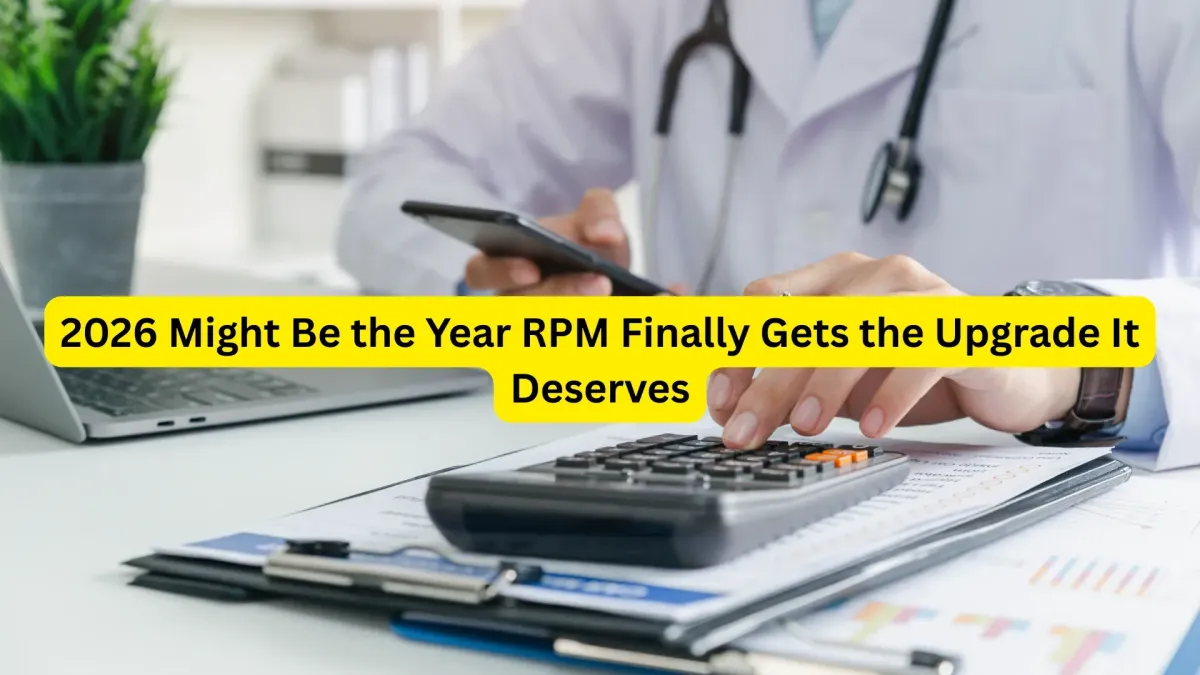
2026 Might Be the Year RPM Finally Gets the Upgrade It Deserves
The Medicare Physician Fee Schedule (PFS) proposed rule for 2026 is a big deal, especially for remote patient monitoring (RPM). The draft is over 1,800 pages and signals that CMS is deeply committed to expanding remote care.
These shifts aren’t minor changes— they could be the most meaningful upgrades to RPM since it began. For practices already using RPM or those thinking about launching it, the proposals aim to boost flexibility, broaden who can qualify, simplify workflows, and improve financial viability.
Background: RPM Billing Today
To appreciate how radical the new proposals are, here’s a refresher on how the existing RPM billing system works:
CPT 99453: Covers initial patient onboarding, device setup, and education. It becomes billable after the patient has 16 days with measurements in a 30-day stretch.
CPT 99454: For supplying the RPM device for a month. To bill it, data transmission must occur on at least 16 of those 30 days.
CPT 99457: Covers 20 minutes of staff time in a month for interactive care management.
CPT 99458: Covers each additional 20-minute block beyond the first.
These rules have been workable, but they also impose big constraints. The “16-day rule” and the hard 20-minute threshold for billing time both limit flexibility. Many conditions don’t require 16 days of monitoring, and meaningful clinician contacts of, say, 10 to 15 minutes go unpaid.
So What’s Changing in 2026? The Proposed Upgrades
The proposed rule shakes up those constraints with a few major changes:
1. Device supply flexibility: “2-Day Rule”
They’re proposing a new code (99XX4) that covers 2 to 15 measurement days in a 30-day period.
The existing 99454 would then cover 16 to 30 days.
Importantly: both would be reimbursed at the same rate. That means even if a patient doesn’t hit 16 measurement days, the provider would still get the same pay.
2. More granular time billing: “10-Minute” CPT Code
A new code (99XX5) would let you bill for 10–20 minutes of RPM care management time.
It’s proposed to carry a work RVU of 0.31 (around half the value of the current 20-minute code).
CMS is not cutting the reimbursement levels for the existing 99457 and 99458 codes (20+ minute codes). That means your current programs won’t lose value.
3. What this means vs. today

So under the proposed structure, you could bill even for patients with fewer measurement days or for shorter interactions that previously couldn’t be captured.
Why This Matters for Practices
These changes are more than billing changes— they can reshape how RPM is adopted and run:
Expand patient inclusion: Patients who only deserve light monitoring (e.g. weekly weigh-ins for GLP-1 users or post-op patients) could now be enrolled and reimbursed.
Improve workflow & fairness: Clinicians won’t be forced to waste or absorb time that doesn’t meet the 20-minute requirement. Short but meaningful touchpoints get recognized.
Scale sustainably: You can enroll more patients and more appropriately bill staff time, making RPM programs more scalable and financially sustainable.
Better care, tailored: Because the rules align more with actual clinical needs (versus rigid billing thresholds), you can better tailor monitoring and interactions — which tends to promote engagement and outcomes.
Bottom Line
The 2026 PFS proposed rule sends a clear message: CMS sees RPM as core to healthcare’s future. If approved, these changes could unlock RPM’s full potential — making it more flexible, accessible, and useful for practices and patients alike.

